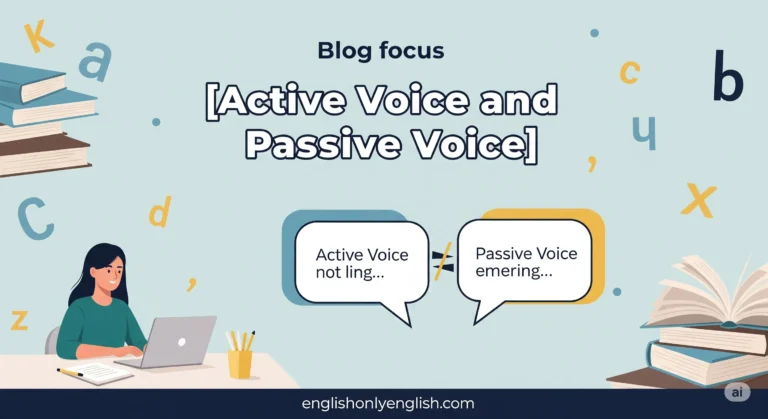Learn Verb Forms: The Key to Fluent English
Mastering verb forms is crucial to understanding English, and verbs are essential to understanding sentences. This is why knowing how to utilize the different varieties of verbs is critical to mastering the spoken language. This article covers everything, from fundamentals to practical guidelines on properly using the various verbs.
Whether a student or teacher, this is your comprehensive resource to learn verb forms and improve communication skills.
What Are Verb Forms? A Beginner’s Guide
Definition and Importance
What exactly are verb forms? Verbs are action words that are used concerning time. Forms of verbs are used to show the action about time. Imagine saying, “I walked yesterday” instead of “I walked yesterday”—incorrect verb usage can completely confuse the meaning of a statement.
Understanding verb forms ensures that your sentences convey the exact meaning you intend. Verb forms are essential for structuring sentences, expressing actions, and identifying when an event occurred.
Types of Verb Forms
There are three main types of verbs, i.e., Present, Past, and Past Participle. Modern grammar has added another one called Present Participle.
- Present Form: The primary term for any action refers to the current variant of a verb. e.g., “run,” “jump,” or “play.”
- Past Form is used to refer to completed actions, e.g., “ran,” “jumped,” and “played.”
- Past Participle: These verbal types are used in nouns and auxiliary verbs, such as “has walked” or “had run.”
- Present Participle—Modern grammar has added this verb form as the fourth. It shows the action while it’s happening, e.g., “eating,” “running,” and “playing.”
Example
Consider how verb forms change the meaning:
- “I talk to my friend.” (Present tense)
- “He talked to his friend.” (Past tense)
- “She is/was talking to her friend.” (Present/Past continuous tense)
With just a tiny change in verb form, the sentence shifts to describe the action in different time frames.
The Four Main Verb Forms Explained
1. Present Form (Base Word)
The first form, the ver, is the base word that shows the action and is used in the present.
2. Past Form
The second version demonstrates what happened in the past.
3. Past Participle Form
The 3rd form uses auxiliary verbs like “has” or “had.”
4. Present Participle
Always ending in “-ing,” this form is used in continuous tenses to show ongoing action.
Example:
- “They are working on the project.”
- “We were playing on the ground.”
Knowing these four forms will help you with English grammar.
Regular vs. Irregular Verb Forms
Regular Verbs
Regular verbs are the words that follow the conjugated pattern to form the past and past participle by adding “-ed” or “-d” to the base verb.
Examples:
- Base Form: “talk”
- Past Form/Past Participle: “Talked”
Irregular Verbs
Irregular verbs don’t follow regular verb patterns, so the main verb is changed.
Examples:
- Base Form: “Go”
- Past Form: “went”
- Past Participle: “Gone”
Common Mistakes Learners Make with Verb Forms
- Mixing Up Tenses
- Incorrect: “I have gone to the store.”
- Correct: “I have gone to the store.”
- Overgeneralizing Regular Patterns
- Learners often assume all verbs add “-ed.” However, irregular verbs work differently (e.g., “break,” → “broke,” not “broke”).
- Ignoring Context
Effective Techniques to Learn Verb Forms
- Repetition and Practice: Consistency is key. Set aside time daily to practice conjugating verbs.
- Using Flashcards: Write the base form, past form, and past participle on flashcards. Quiz yourself regularly.
- Speaking Exercises: Practice conversations using varied tenses. Role-playing real-life scenarios ensures practical learning.
These methods make learning verb forms manageable and effective.
FAQs
Why should I learn verb forms?
Mastering verb forms improves your speaking, writing, and overall fluency.
Are irregular verbs harder to learn?
Initially, yes. But with consistent practice, they become manageable.
How can I practice verb forms daily?
Practice speaking, and incorporate verb exercises into your routine.
Are there tools to help me?
Yes! Apps like Grammarly and books like English Grammar in Use are excellent resources.
Conclusion: Master Verb Forms, Master English
Verb forms are the foundation of fluent English. Understanding their nuances will unlock smoother conversations, more precise writing, and greater confidence. Start small—practice daily, use helpful tools, and stay consistent.
Remember, progress comes with effort. Begin practicing verb forms today and transform your English mastery!







